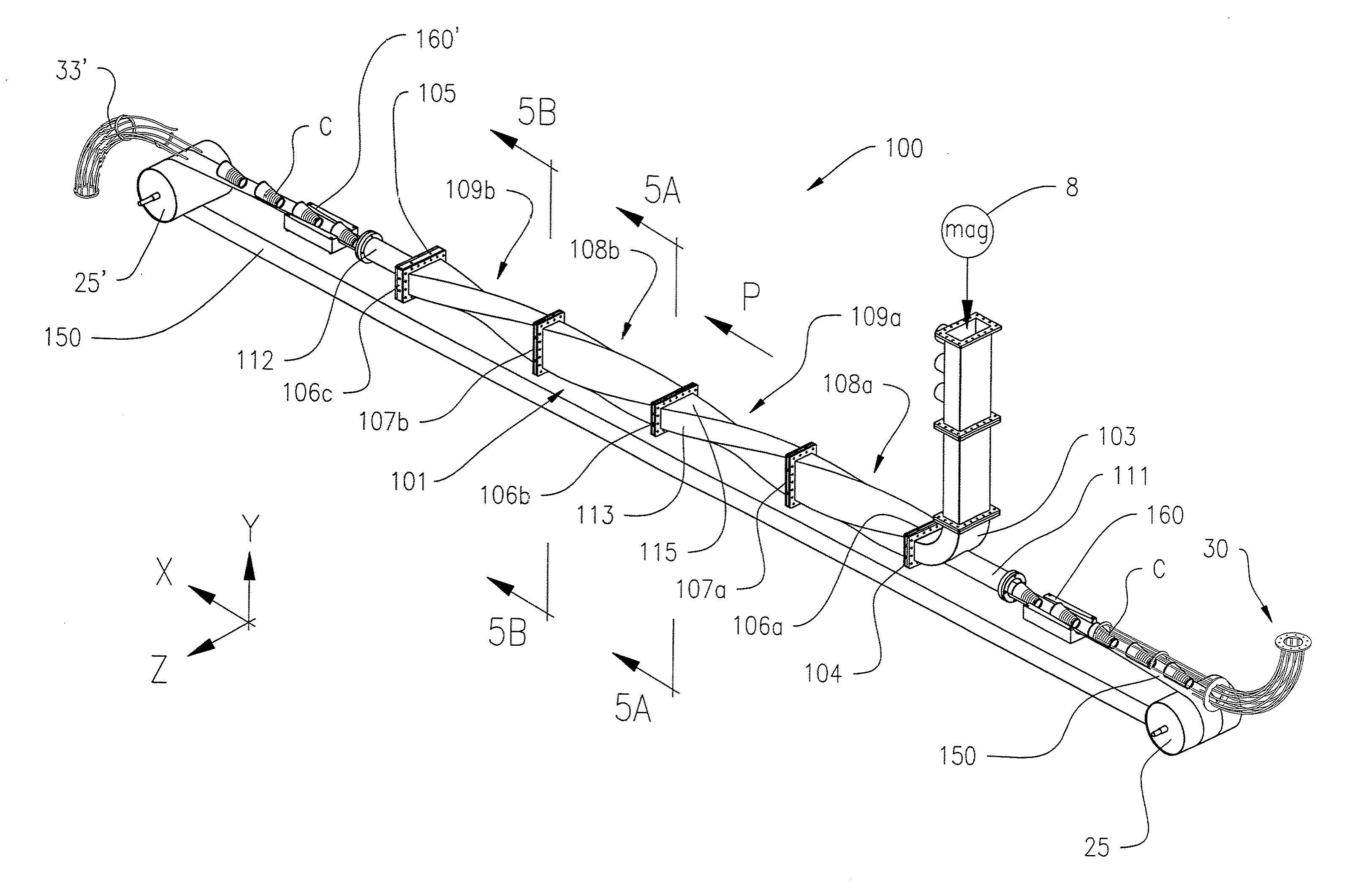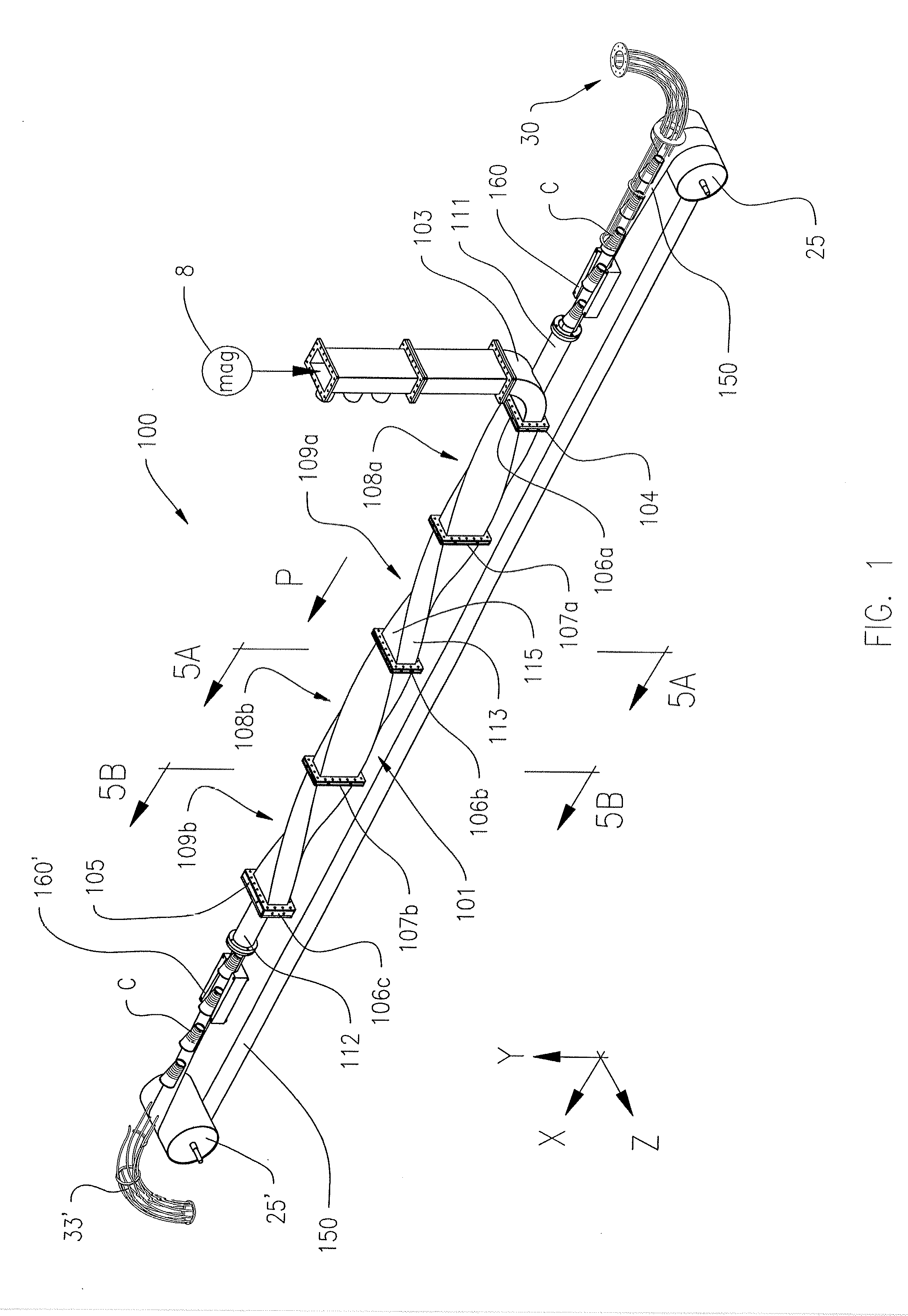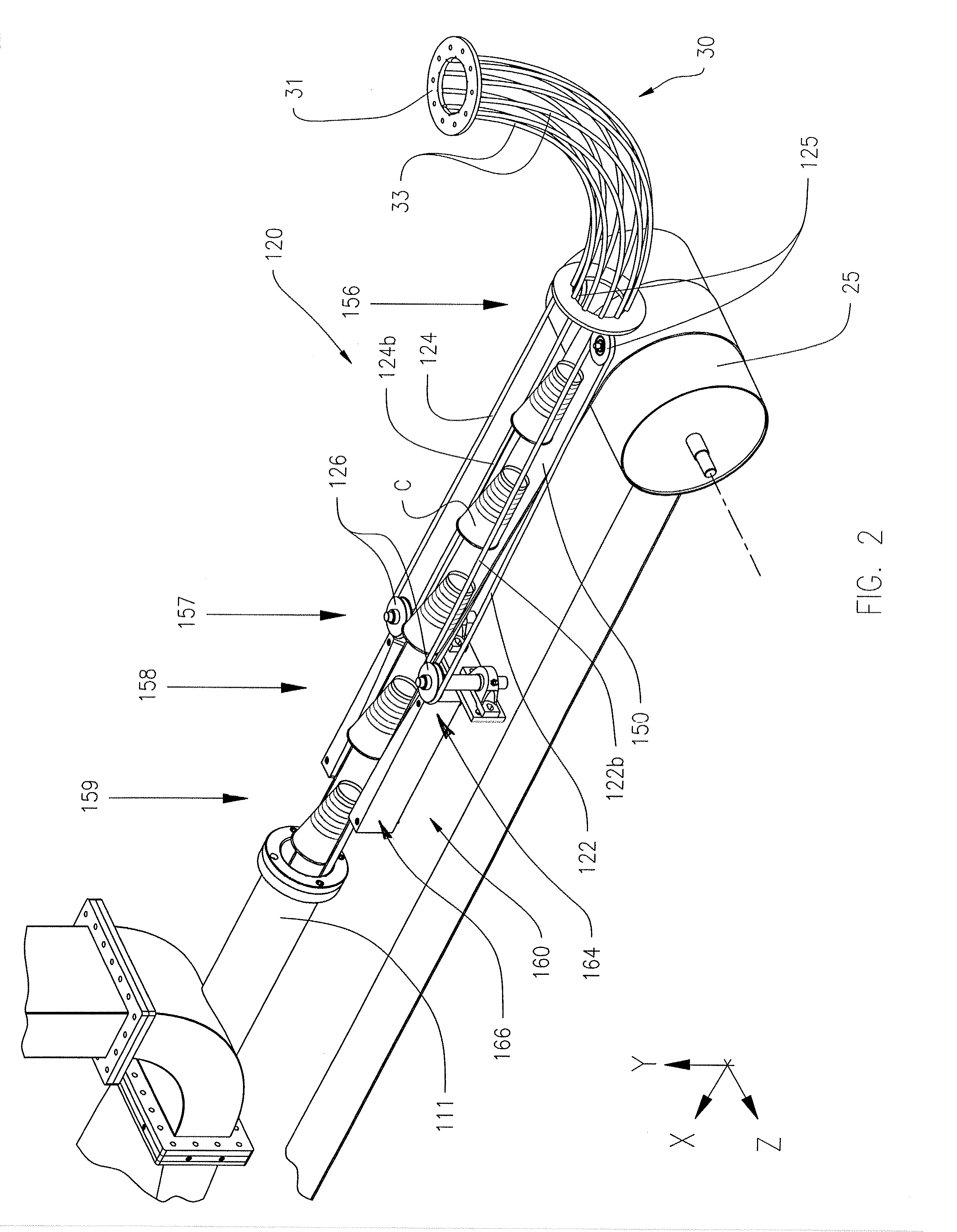Waveguide Exposure Chamber for a Micrwave Energy Applicator
a technology of applicators and exposure chambers, applied in dielectric heating circuits, electric/magnetic/electromagnetic heating, other domestic articles, etc., can solve problems such as unfavorable uniform heating of systems, and achieve the effect of improving the uniformity of exposur
- Summary
- Abstract
- Description
- Claims
- Application Information
AI Technical Summary
Benefits of technology
Problems solved by technology
Method used
Image
Examples
second embodiment
[0048]a conveyancing means is shown in FIG. 13, where only a section of a plastic linked belt is presented. A plastic linked belt can be substituted in place of the fiber glass belt described above as long as the plastic material is microwave transmissible. As seen, links “a”, “b”, and “c” are joined together to form a flexible and continuous belt that would extend through the waveguide in a similar fashion to that of the fiberglass belt. With a plastic linked belt, driven pulleys 25 and 25′ would have to include respective sprockets (not shown) on each pulley end that would align with and engage with the series of slots “d” that are formed in the plastic link belt when a multiplicity of links are joined together to form a continuous belt. It should be readily understood by those in the art how the teeth of each sprocket would interface with the slots to drive the plastic linked belt through the waveguide. Therefore, the sprockets are not shown in the drawings. The plastic belt also...
first embodiment
[0049]FIG. 2 shows an integral article staging system 30 for de-accelerating and depositing a unit of an untreated or non-microwaved article onto the belt 150 at the entrance end of the waveguide 102. In an example of the invention, the untreated article is a paper beverage container having a frusticonical sidewall and closed bottom, and which includes a microwave-activatable material. The article staging system 30 includes guiderails 33 that receive the containers from a pressurized, pneumatic transfer system at an in-feed end 31, and deposit the article onto the belt 150 at or between points 156 and 157. The open spaces in the guiderails 33 allow the conveying air to escape and the containers to loose velocity, thereby slowing the speed of the container. The containers can be conveyed to the article staging system 30 by other known conveying systems, including mechanical belt and gravitation conveyance. The containers can be delivered substantially continuously at a predetermined ...
PUM
| Property | Measurement | Unit |
|---|---|---|
| distance | aaaaa | aaaaa |
| distance | aaaaa | aaaaa |
| distance | aaaaa | aaaaa |
Abstract
Description
Claims
Application Information
 Login to View More
Login to View More - R&D
- Intellectual Property
- Life Sciences
- Materials
- Tech Scout
- Unparalleled Data Quality
- Higher Quality Content
- 60% Fewer Hallucinations
Browse by: Latest US Patents, China's latest patents, Technical Efficacy Thesaurus, Application Domain, Technology Topic, Popular Technical Reports.
© 2025 PatSnap. All rights reserved.Legal|Privacy policy|Modern Slavery Act Transparency Statement|Sitemap|About US| Contact US: help@patsnap.com



